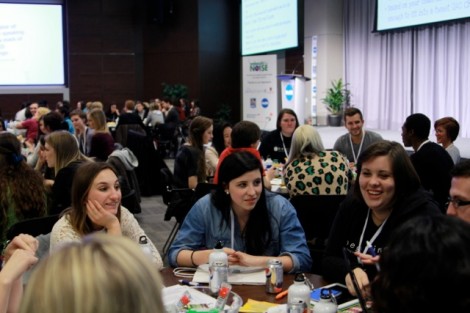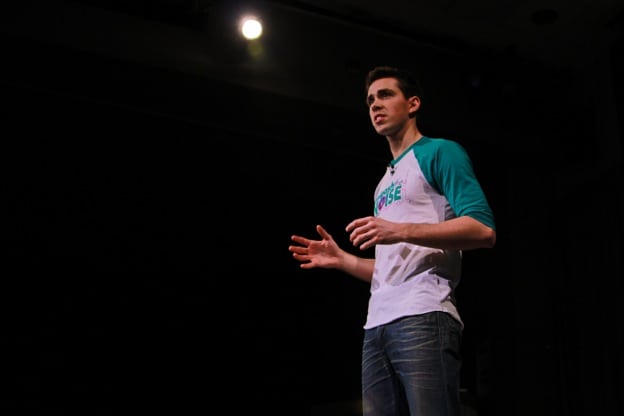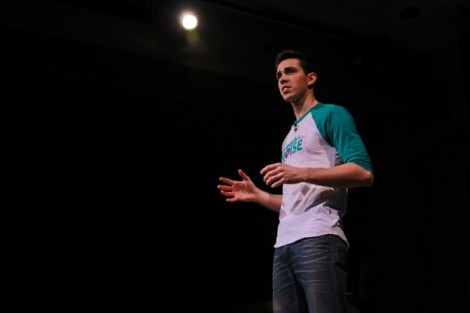Today, the mental health of Canada’s youth is a challenge for every post-secondary institution, including the University of Toronto. Whether it is because of the struggle for a satisfactory GPA, increased rivalry for employment, or the rollercoaster ride of being part of a socially networked society, close to one in five Canadian youth faces the reality of a mental disorder. Only one in six of the youth diagnosed get access to the mental health programming they need.
A key barrier to access to mental health programs for youth is the stigma attached to mental health issues. Society stereotypically considers mental health to be synonymous with mental illness. Yet mental health affects everybody, and there is a spectrum from mentally-well to mentally-ill. Seeking mental health programs is typically taboo for youth who do not want to be labeled “mentally ill” or “disordered”, but are looking to belong.
So, what can everybody do to defeat the taboo? Call bullshit on the stigma.
The truth is everybody, whether knowingly or not, has probably stigmatized a friend or family member.
The Let’s Call Bullsh*t Campaign is a student-run initiative organized by Partners for Mental Health to break the stigma of mental health by increasing society’s understanding of just what stigmatizing language is. Calling bullshit means that everybody needs to re-imagine their definition of what mental health is, and the language they use to address it.
At the University of Toronto, Health and Wellness is introducing the Blue Space program to break the stigma of mental health. The vision behind Blue Space, like Positive Space for the LGBTQ community, is to create a safe space for anyone to speak about mental health without fear of judgment or isolation.
Dan Johnson, the Community Health Coordinator at Health and Wellness, says that “the shades of blue used to create the Blue Space logo represent the spectrum of emotions involved in mental health, and challenge the stereotype of blue being a symbol of feeling sad. The colour blue can be soothing or represent feeling happy. Conversations surrounding mental health should include the spectrum of emotions involved, and the U of T community needs to know it’s okay to talk whether you’re feeling happy or worried.”
Any student, faculty, or staff can get a Blue Space poster or postcard from Health and Wellness to display across the University of Toronto campus. “A Blue Space poster or postcard is a symbol of a safe space for mental health and a commitment to shattering the stigma of it,” says Johnson.
Like Blue Space, Peers Are Here is looking to break the stigma of mental health. Peers Are Here is a student-run mental health group at the University of Toronto. By creating a safe drop-in space for students to talk to each other and learn the tools they need to stay mentally well, Peers Are Here is looking to build a community approach to mental health at U of T.
In addition to Blue Space and Peers Are Here, the University of Toronto runs skills workshops out of CAPS to build resiliency to mental illness. The workshops look to teach students how to manage their thinking, regulate their emotions, change their behaviour, and balance their life.
This year, U of T saw significant student-run mental health programming, like laughter yoga, meditation, and skills workshops.
During a weekend this past March, secondary and post-secondary students across Canada journeyed to the MaRS Discovery District for the Unleash the Noise Student Mental Health Innovation Summit headed by the Jack Project.
The summit aimed to transition the state of mental health advocacy from talk to action by teaching youth how to act to shatter stigma.
At the summit, students looked at Canada’s mental health landscape and brainstormed what they could do to change it for the better and how they could better cooperate. Alexandra Misiak, a student from the U of T delegation, said, “The summit increased my understanding of the mental health landscape and how I can act to shatter the stigma of mental health… It inspired me to Unleash the Noise at U of T and beyond.”
Beyond the brainstorming sessions, the summit welcomed student speakers who introduced the mental health programs they run or who wrote letters addressed to “16-year-old-me,” displaying how storytelling is a tool for change.
Looking to the 2013–2014 school year, the Unleash the Noise team promised to develop a step-by-step strategy and action kit to be ready by the fall of 2013 to implement at U of T.



